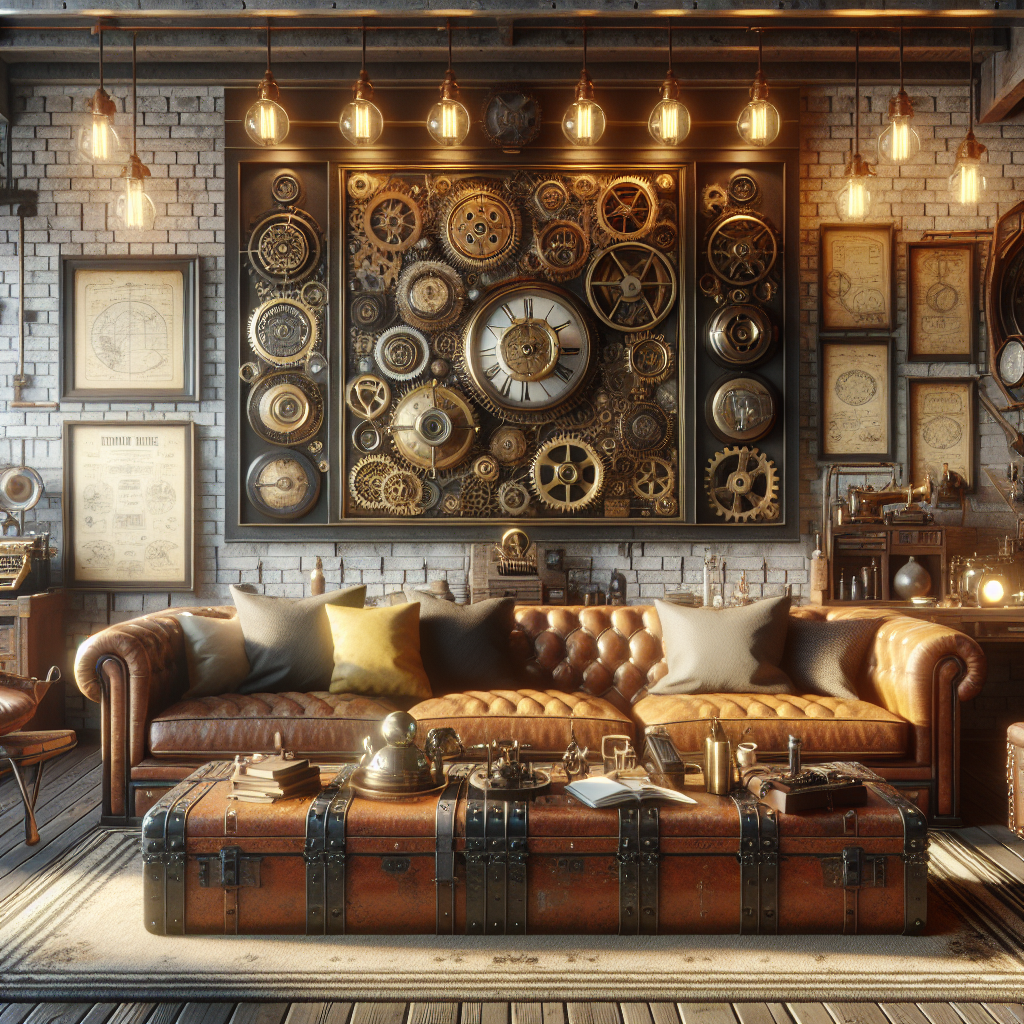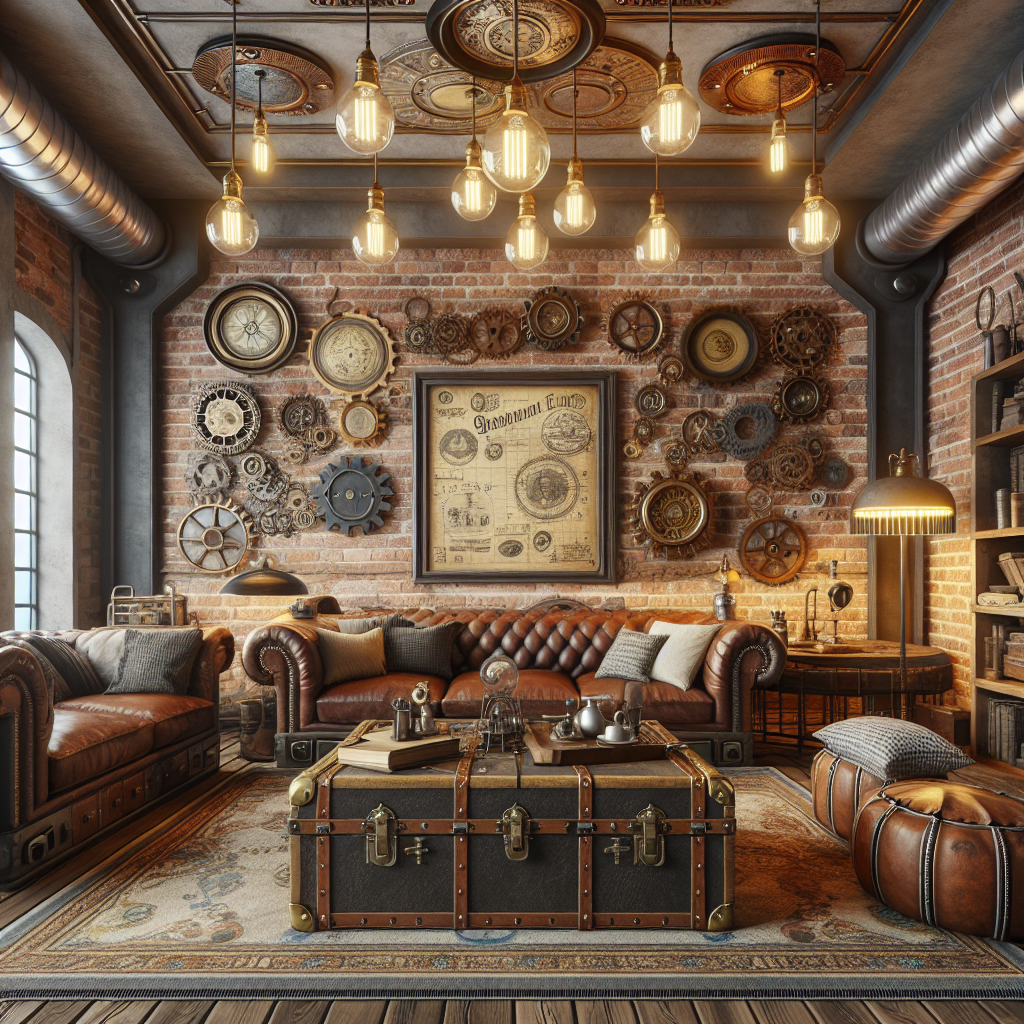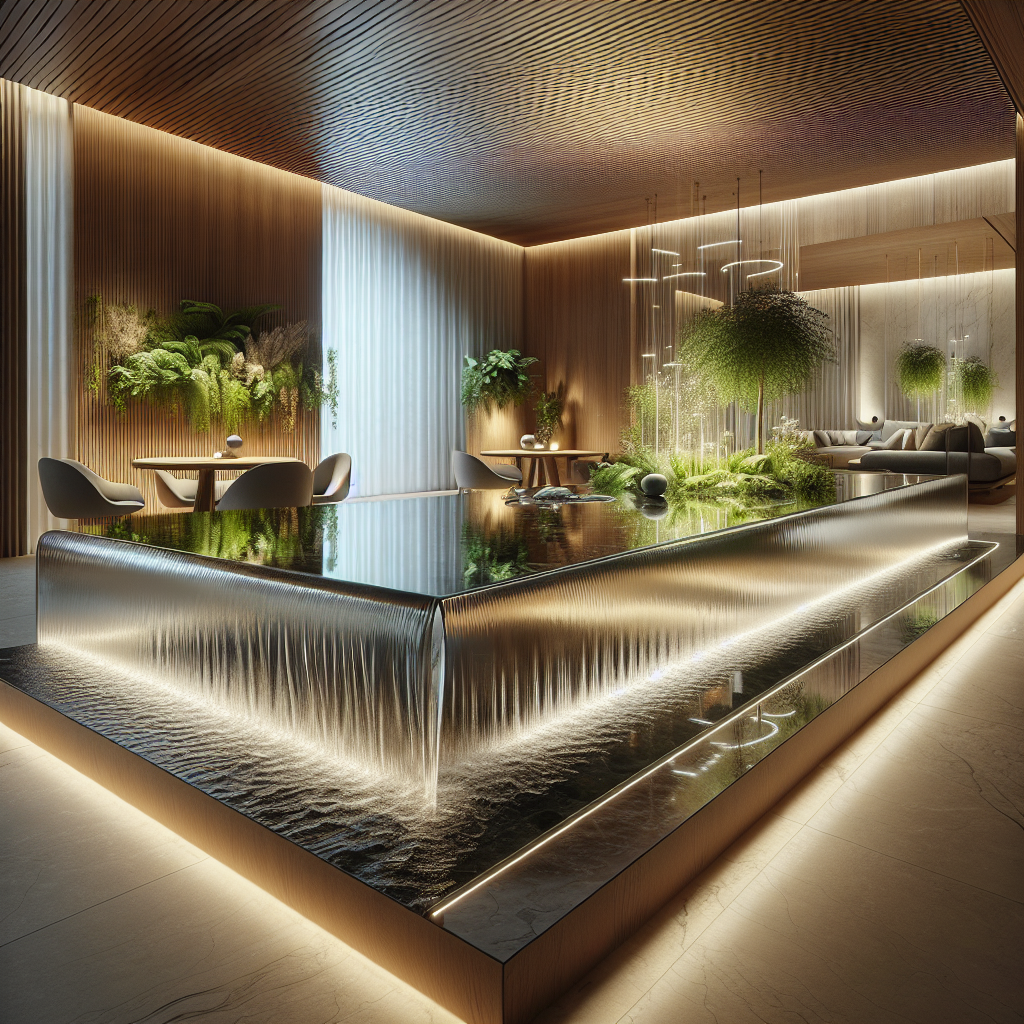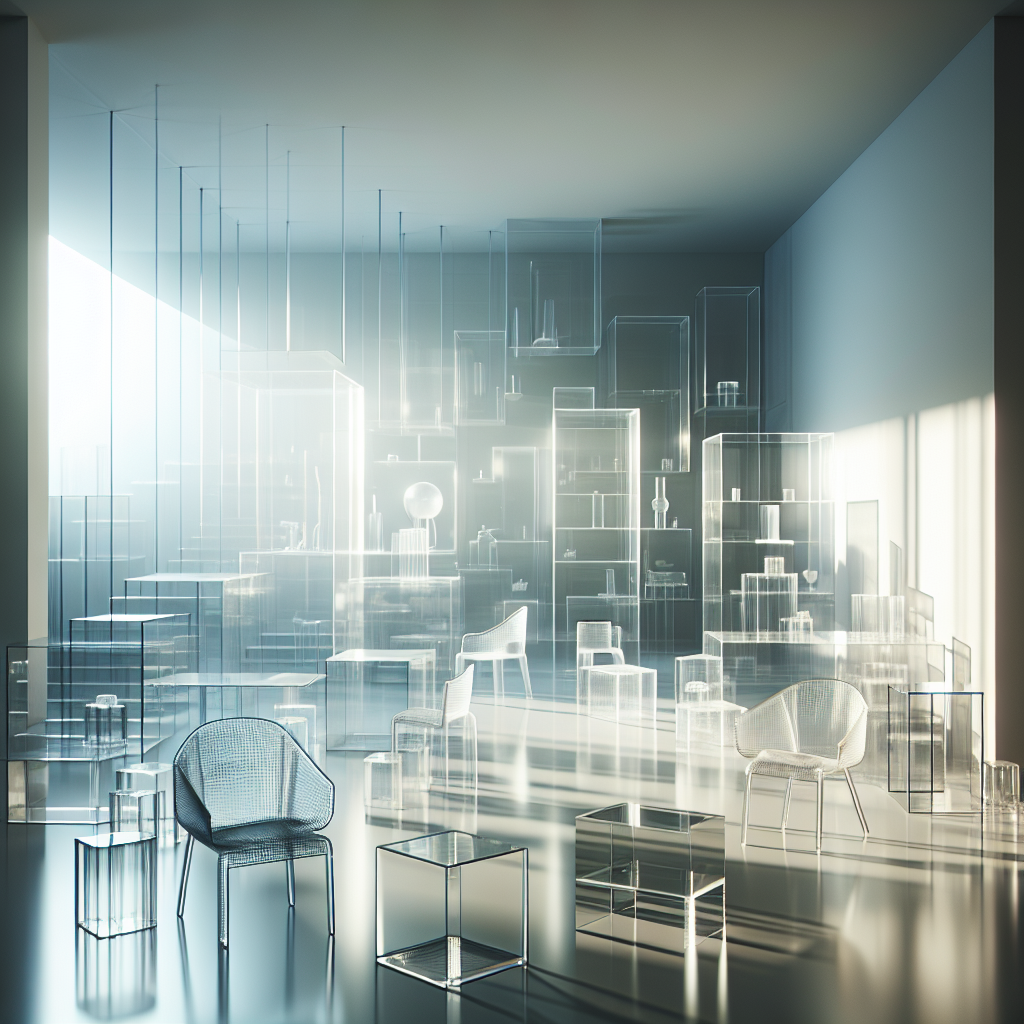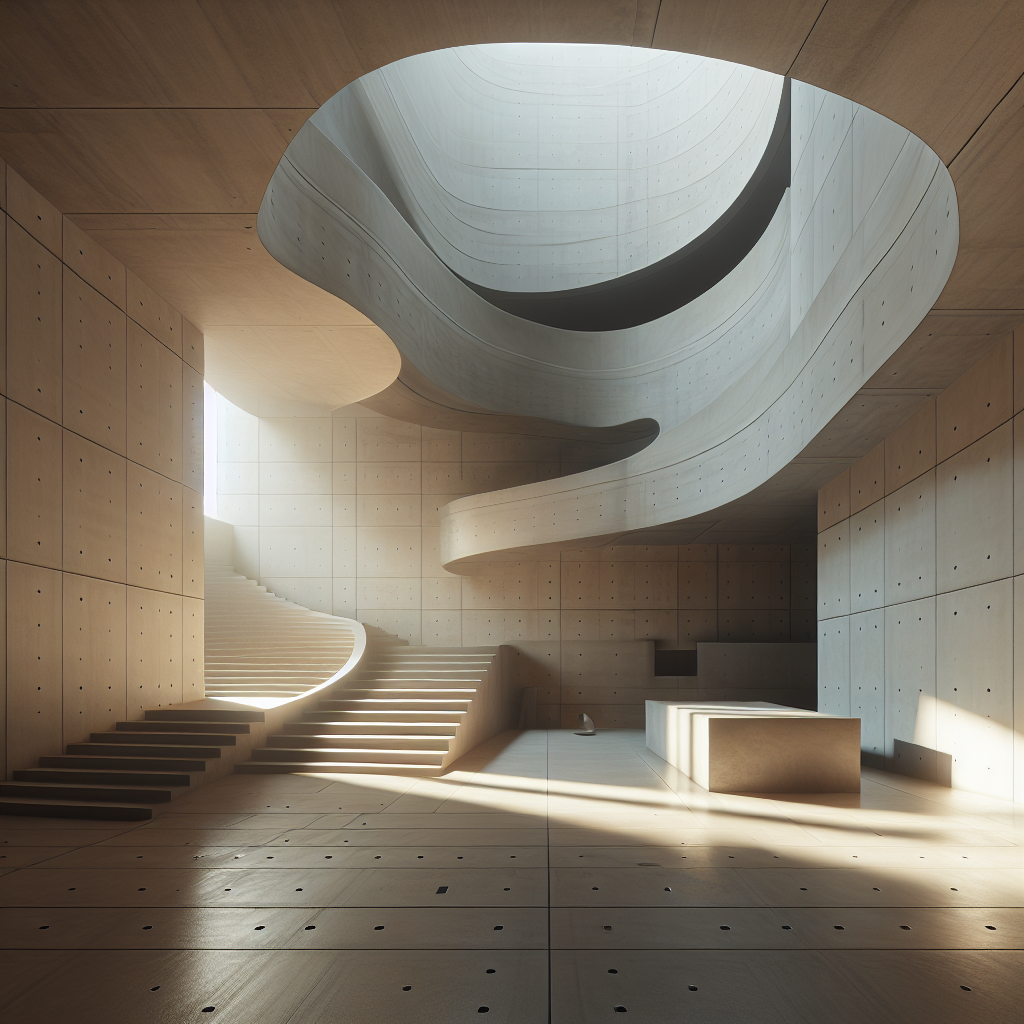Steampunk Aesthetic: Infusing Industrial Fantasy into Interior Design
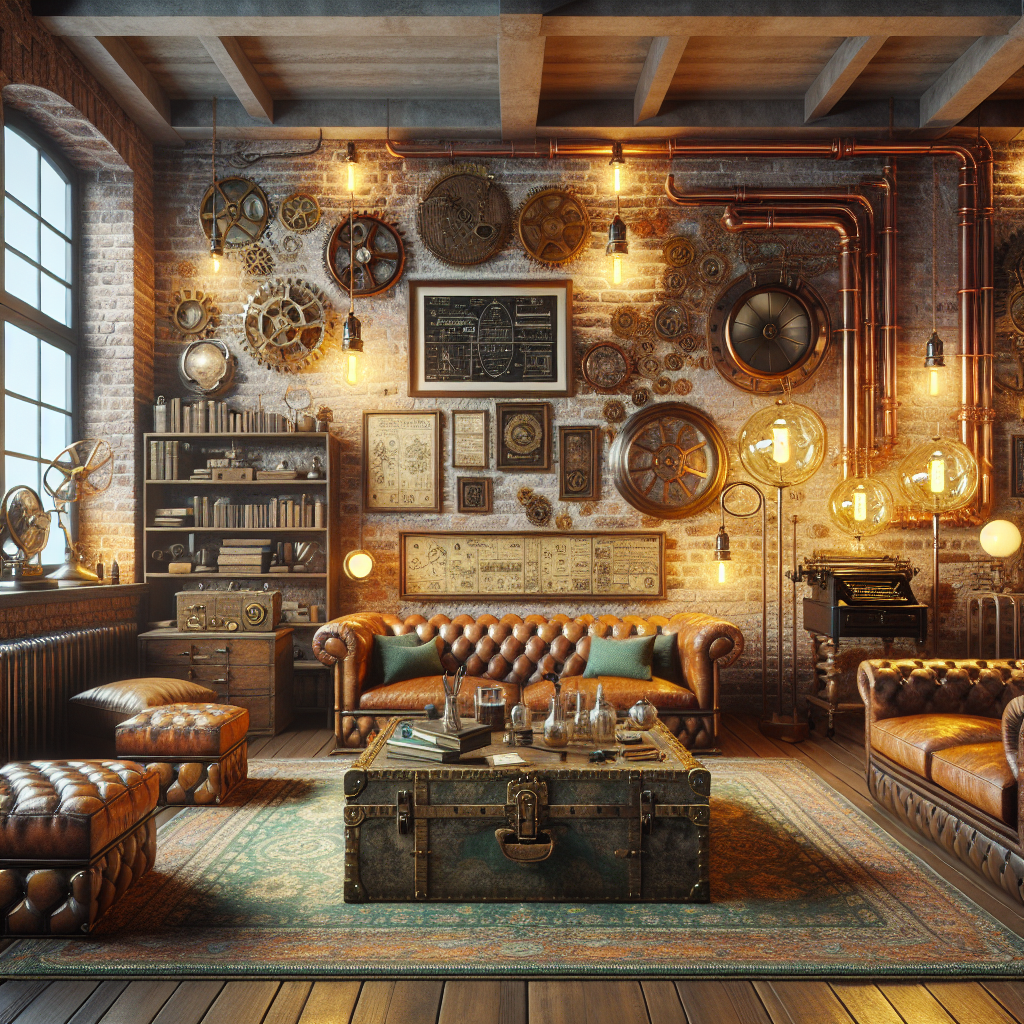
The Resurgence of Steampunk Aesthetic in Modern Interior Design
The steampunk aesthetic, a genre of design that fuses the industrial machinery of the 19th century with elements of fantasy, has seen a remarkable resurgence in the realm of interior design. This style, characterized by its ornate details and anachronistic technologies, offers a unique blend of the past and the imagined future, creating spaces that are both nostalgic and boldly innovative.
At the heart of steampunk design lies a fascination with the Victorian era’s mechanical ingenuity and the raw textures of the Industrial Revolution. Designers infuse interiors with a sense of adventure and discovery, much like the literary works of Jules Verne and H.G. Wells that inspired the movement. From steampunk’s Wikipedia page, we learn that the aesthetic extends beyond literature and into visual and musical arts, fashion, and of course, interior design.
Key Elements of Steampunk Interior Design
When stepping into a steampunk-inspired space, one is immediately enveloped by a tapestry of rich textures and materials. Exposed brick walls, distressed wood, and aged leather meet polished brass, copper piping, and intricate gear motifs. The interior design palette is warm, with earthy tones complemented by metallic accents, creating an ambiance that is both cozy and industrial.
Furniture pieces in a steampunk interior often appear as if repurposed from another era. Think of vintage trunks doubling as coffee tables or antique clocks that have been transformed into statement art pieces. The art of repurposing vintage finds for modern interiors is a hallmark of this aesthetic, marrying functionality with historical charm.
Lighting: The Illuminated Narrative of Steampunk Design
Lighting plays a pivotal role in setting the steampunk scene. Fixtures often resemble old factory parts or nautical instruments, with Edison bulbs casting a warm glow that highlights the intricate details of the design. The use of lanterns, pendant lights encased in metal cages, and floor lamps with brass or iron stands are common, providing a visual narrative that complements the industrial fantasy theme.
For those seeking to incorporate steampunk lighting into their homes, the industrial chic lighting fixtures article on mainifesto.com offers a treasure trove of ideas that can be adapted to this particular style.
Accessorizing with Steampunk Flair
Accessories are the jewels of steampunk interior design, with each piece contributing to the overall narrative of the space. Vintage maps, globes, and scientific instruments serve as conversation starters, while leather-bound books and typewriters evoke the romance of a bygone era. Ornate picture frames, mirrors with gear details, and vintage patent drawings adorn the walls, adding layers of interest and depth.
For those keen on integrating steampunk elements into their home, creating a gallery wall with vintage flair is an excellent starting point. This approach allows for a curated display of steampunk artifacts that can be easily adjusted to suit changing tastes or new finds.
Challenges and Considerations in Steampunk Design
While the allure of steampunk design is undeniable, it presents unique challenges. Striking the right balance between thematic elements and practicality is key. Overloading a space with too many details can lead to visual clutter, while too few may fail to convey the desired aesthetic. Designers must navigate these waters carefully, ensuring that each piece serves a purpose and contributes to the overall cohesion of the design.
Another consideration is the integration of modern technology into a steampunk setting. Designers often employ creative solutions, such as encasing contemporary gadgets in vintage-inspired housings, to maintain the illusion of a retro-futuristic world.
Steampunk in Commercial Spaces
The steampunk aesthetic is not confined to residential interiors; it has also made its mark on commercial spaces. Restaurants, bars, and retail stores have embraced the theme, creating immersive experiences for patrons. The design invites customers into an alternate reality, where the romance of the Victorian era collides with the promise of a technological future.
One notable example is the Truth Coffee shop in Cape Town, South Africa, which has been lauded for its steampunk design. Here, patrons can sip their brews surrounded by brass piping and vintage coffee machines, fully immersed in the steampunk narrative.
The Future of Steampunk Aesthetic in Interior Design
As we look to the future of interior design, the steampunk aesthetic continues to evolve. Designers are finding new ways to blend the old with the new, creating spaces that are both timeless and forward-thinking. The style’s adaptability and emphasis on craftsmanship resonate with those seeking a departure from the minimalist trends that have dominated recent years.
Ultimately, the steampunk aesthetic offers a creative playground for designers and homeowners alike. It’s a celebration of imagination, history, and the endless possibilities that arise when the two are intertwined. As we continue to explore the boundaries of interior design, the steampunk aesthetic stands as a testament to the enduring appeal of storytelling through space and decor.
Embracing the steampunk aesthetic in interior design is more than a nod to the past; it’s a bold statement of individuality and a love for the fantastical. It challenges us to rethink our perceptions of what a space can be and invites us to infuse our surroundings with a sense of wonder and whimsy. As the gears of design continue to turn, the steampunk aesthetic remains a vibrant and compelling force in the world of interior design.

